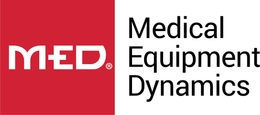When exploring patient monitors, three main types stand out:
Vital Signs Monitors
Multi-Parameter Monitors
Anesthesia / CO2 Monitors
These three types of monitors encompass all of the potential options that are available for patient monitors. In many cases the differences between two categories may be small; they may have similar features, and in some cases the same model of patient monitor may fall in multiple categories depending on the particular units feature set.
Here is what makes each type unique:
Vital Signs Monitors
Vital Signs Monitors (also known as Spot Check Monitors) are basic patient monitors that are primarily used to perform quick checks of a patient’s basic vital signs. These units may monitor just a single parameter, such as Non-Invasive Blood Pressure (also known as BP, NIBP or NBP), or Pulse Rate. Other models may monitor a combination of multiple parameters, which may also include: Respiratory Rate (Resp); Blood Oxygen level (also known as Spo2); and Temperature (Temp). They may also feature an optional recorder to print out the results of its measurements.
The main features separating these models from Multi-Parameter Monitors are their lack of Cardiac Monitoring (also known as ECG or EKG), as well as their inability to recording trending information and monitor all parameters continuously.
Multi-Parameter Monitors
Often viewed as a step up from Vital Signs Monitors, Multi-Parameter Monitors distinguish themselves by being capable of monitoring a variety of patient parameters (thus the name). While some simpler models may be able to take less measurements than some other more advanced vital signs monitors, the main feature separating them is their ability to continuously track the patient’s condition over time.
To assist with this, they normally have the ability to maintain a record of the patients parameter trends. In a clinical setting these units are often connected to Central Nursing Stations to allow the staff to monitor a large number of patients at once, as well as often being connected to a central server to backup the patients data over a long period of time. Like vital signs monitors, they can usually be upgraded to include a recorder as well; with the difference of being able to print a copy of the trends as well as the current measurement.
One interesting feature that is commonly found on some (though not all) multi-parameter monitors, are interchangeable modules. This modularity allows a monitor to be upgraded over time with new parameters, as well as increasing reliability by enabling the operator to swap a damaged module with a working unit instead of requiring the entire unit to be repaired or disposed of. In some monitors, certain modules exist that can even upgrade a standard multi-parameter monitor to a more advanced Anesthesia or Co2 Monitor.
Anesthesia and Co2 Monitors
These advanced monitors usually feature a variety of parameters, most commonly including: NIBP, Spo2, Pulse, ECG, and Resp. The difference between these and other multi-parameter monitors is their ability to be used to monitor Co2 concentration in the patient's breath (also known as Capnography). These monitors are most commonly used to monitor patients under sedation, with Anesthesia monitors being a more advanced version that is capable of monitoring the levels of anesthesia gases along with Co2. These models are commonly referred to as agent monitors, with this capability often being provided by separate Anesthesia Gas Modules.

